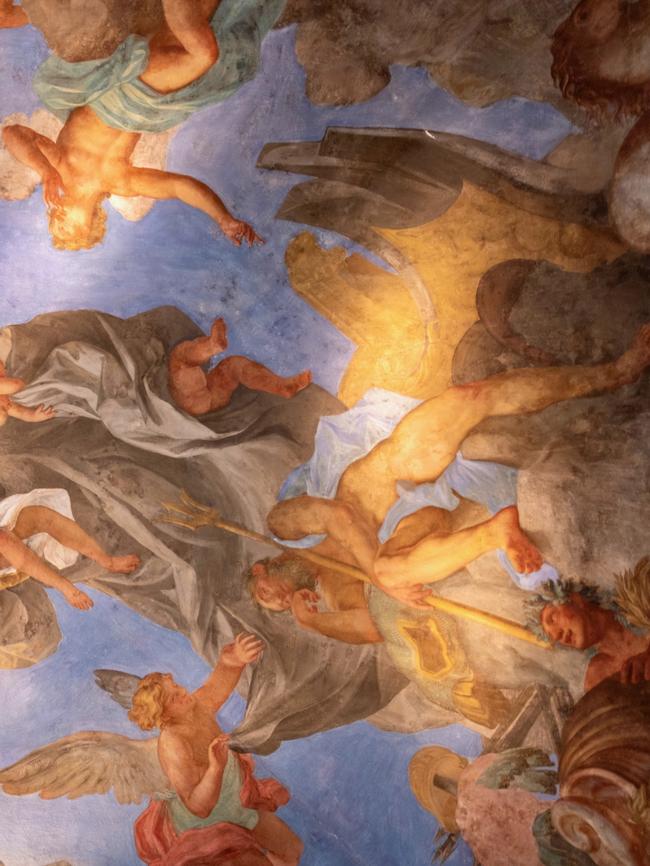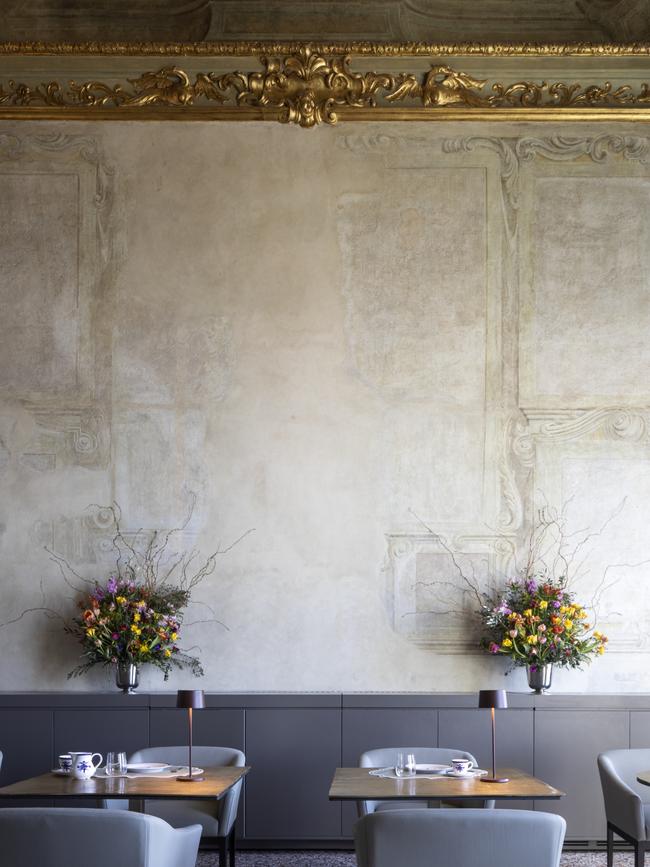Discovering this palazzo is just the start of the secrets of this grand city
The flashy gilded cities of Florence, Rome and Venice, might get all the good PR but this place feels like a wealthy old aunt left to her own devices in a fabulous crumbling mansion.

‘In Venice, all the beauty is on the outside,” says Emanuela Brignone Cattaneo, gliding through the narrow alley that slices a row of impressive palazzos in Genoa’s old town. “But in Genoa, all the beauty is on the inside. Everything in Genoa is hidden. You have to get behind the doors to see what is here.”
We’ve been peering down side streets and alleyways, into doors and beyond gates as we have walked, admiring the many hidden things in this ancient city in Italy’s northwest. But surely few of Genoa’s secrets are as impressive as those Brignone Catteneo herself possesses: namely her astonishing new hotel, Palazzo Durazzo Suites.
I say new, because the hotel opened in 2023, but the palazzo was actually constructed in 1624, at the tail end of Genoa’s golden century, when the city quite literally ruled the world. “Genoa was once the capital of Europe, and the most powerful city in the world,” says Brignone Catteneo. “It was enormously wealthy and powerful, and you can see that in the buildings today.”
It is a funny thing that few people visit Genoa these days on their Italian journeys. Thoroughly eclipsed for PR by the flashy gilded cities of Florence, Rome and Venice, the place feels a little like a wealthy old aunt who has been left to her own devices in her fabulous crumbling mansion.

RELATED: THE GENOVESE BEACH WHERE THERE’S STILL ROOM TO SPREAD YOUR TOWEL
Amazingly, until the opening of Palazzo Durazzo Suites, the city had no luxury boutique hotels, and Genoa ranks as only the 26th most visited region or town in Italy.
“A lot of people don’t know about us,” says Brignone Catteneo, with a shrug. “Which is a shame.”
We have come to Genoa after a frenetic few days in the nearby cliff-hugging region of the Cinque Terre, about 90km south on the same stretch of the Ligurian Sea. Like other coastal areas in this part of Italy, tourism in the Cinque Terre has reached peak chaos and you are more likely to hear American voices in the restaurants than Italian ones.
Arriving in Genoa, then, feels like stepping into a parallel universe. Here is a grand and beautiful Italian city filled with historical treasures and extraordinary architecture – and there are so few tourists we can enjoy wandering the streets without the self-conscious feeling we’re adding to the visitor overload. It is a revelation.


As Brignone Catteneo talked about, Genoa has a long and dazzling history dating back to the 5th Century BC. But the city reached its zenith during the Renaissance when it became the most important seaport in Europe. Christopher Columbus was born here in 1451; the world’s first state bank, the Bank of Saint George, was formed here in 1407; and at one point, most of the world’s gold was traded through Genovese merchants. Powerful families rose and enormous fortunes were made and lost.
In the late 16th Century, the town’s nobility made the far-sighted decision to do away with the city’s decrepit medieval streets and turn the place into a modern functional city, building a beautifully planned 15ha metropolis rising seven storeys into the sky. Divided by narrow alleyways, the “Strade Nuove” (which received UNESCO World Heritage protection in 2007) remains dominated by 42 significant palazzos, of which Palazzo Durazzo is one.


The palazzo’s original purpose was as a guesthouse for the Genovese state, a place to host dignitaries from around the world. But over the centuries it has had a variety of uses, most recently as offices. Still owned by the family that built it (Brignone Cattaneo’s husband, Giacomo Cattaneo Adorno, is a descendant of the Durazzos), the decision was made in 2020 to turn the building into a hotel for the world to enjoy.
Brignone Cattaneo, an architect, undertook the project’s restoration herself, lovingly keeping the building’s secretive treasures intact while bringing it into the 21st Century.
We are staying in the Il Doge suite, an enormous chamber under a 7m-high ceiling complete with an 18th-century fresco, and it is amazing. But every room is its own work of art. La Musica, a minimalist suite overlooking Via del Campo, features a framed score by Korean artist Nam June Paik. The Ceramiche suite offers Persian fabrics and a collection of gallery-worthy ceramics sourced from around the world. In the I Costumi room guests sleep beside an ancient Turkish costume, a gift from Queen Elena of Italy to her lady-in-waiting, Matilde Giustiniani Durazzo. There are 12 suites, each uniquely blending Renaissance charm with contemporary Italian design, and an ageless sense of whimsy.

The rest of the hotel is stunning, too, from the plush red cocktail bar with its mystical artwork by American Sam Falls to the glorious little breakfast room with views over the Port of Genoa.
Interestingly, part of the reason Genoa has failed to take off as a tourist destination lies in the geographical advantages that made it so wealthy in the first place. The Port of Genoa has long been a key stop for tankers and importers, with the practical use of the harbour a sour detraction from its possibly greater potential as a tourism hub.
As well, some time in the 1960s, a decision was made to build an unsightly freeway along the waterfront between the port and the old town. Now the town’s major thoroughfare, there are plans to re-route it and restore the city’s view to the world. But in the words of Brignone Cattaneo, “like everything in Italy, that might take 50 years, or forever”.
But even these things don’t detract much from Genoa’s great interest and charm. Best get there now, before tourists uncover this sumptuous gem.


Checklist
Getting there: Genoa is 90 minutes by fast train from Milan.

Stay: If you were to stay in a hotel like Palazzo Durazzo in Venice or Rome, you would pay at least five times more than in Genoa. Rates start at €450 ($A740) including breakfast. palazzodurazzo.com/en


Eat: Pesto is Genoa’s best-known culinary gift to the world and you can eat it everywhere here. Humble trattorias abound; we eat delicious pesto lasagne at Trattoria Delle Grazie, a short walk from the hotel, in an atmospherically louche alley in the old town. You’ll also find focaccia – another Genovese speciality – everywhere.

Do: See the spectacular Genoa Cathedral, consecrated in 1118, with its black-and-white Moorish exterior festooned with stone lions. The Palazzo Spinola National Gallery offers an insight into the beautiful interiors hidden behind closed doors; enter to find gold-plated walls in a 16th-century palace commissioned by Francesco Grimaldi. Look out, too, for the Scattered Museum of Jeans, a roaming street exhibition dedicated to denim, which was invented in Genoa.


To join the conversation, please log in. Don't have an account? Register
Join the conversation, you are commenting as Logout